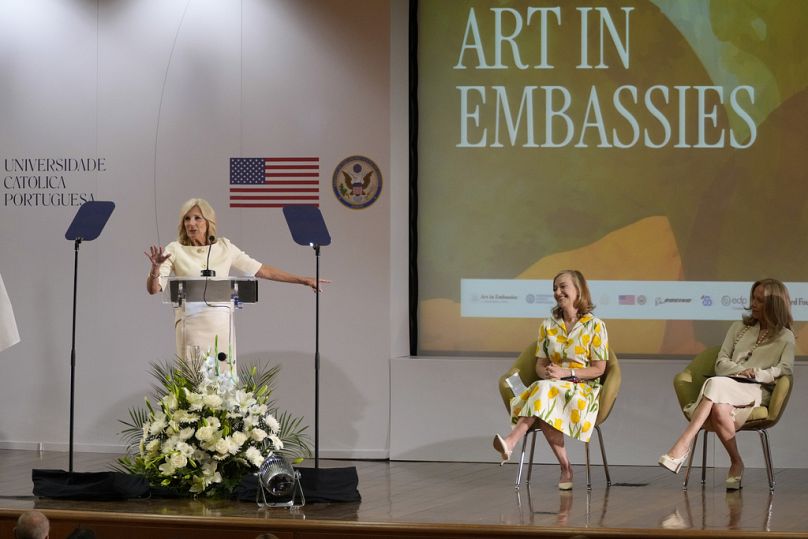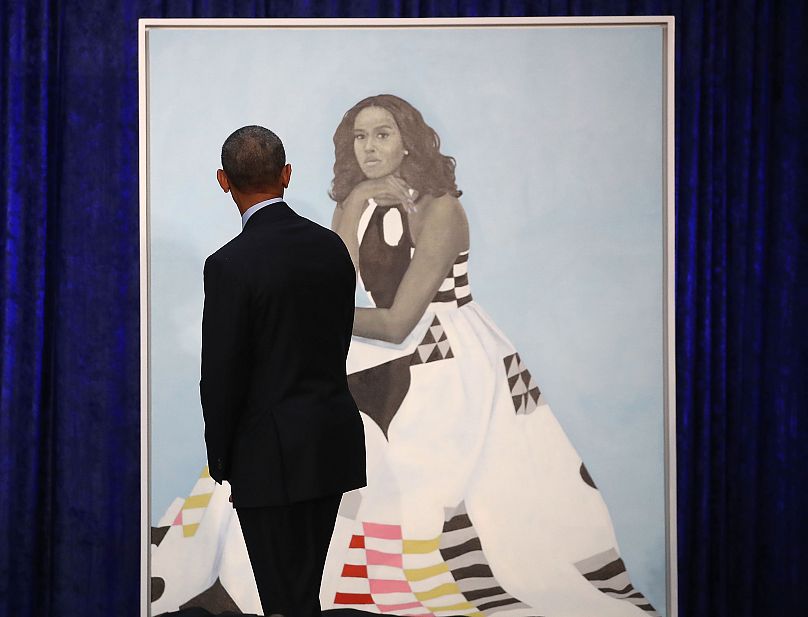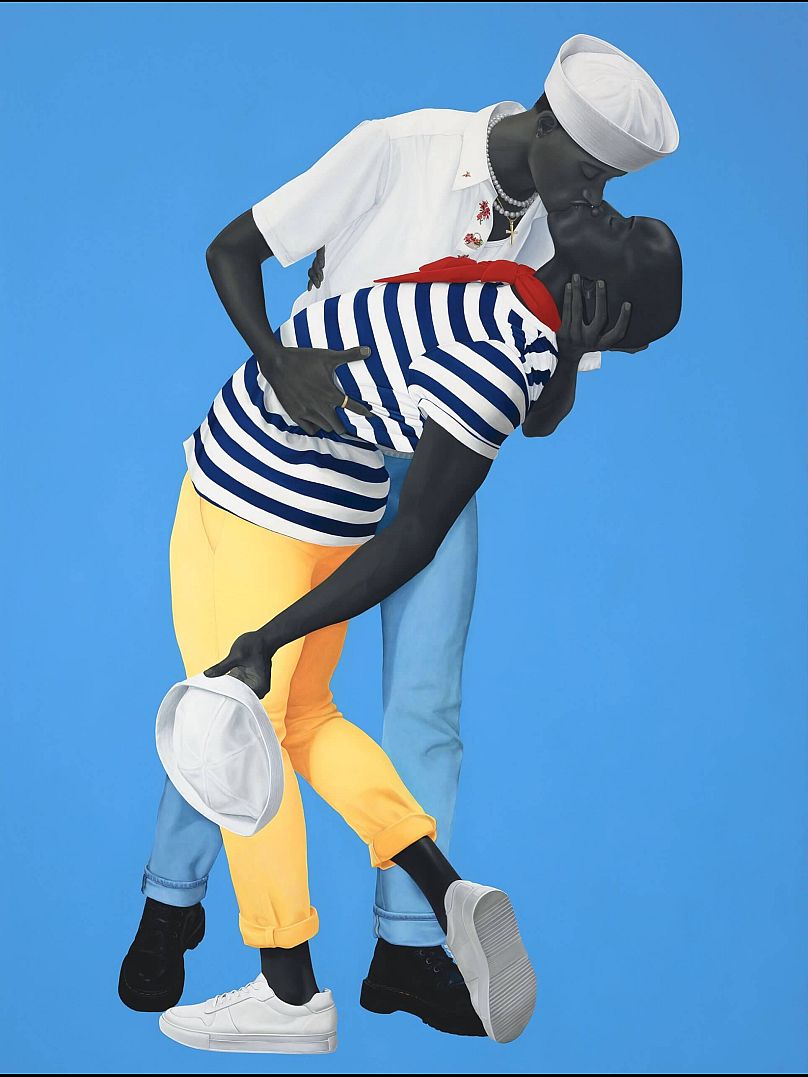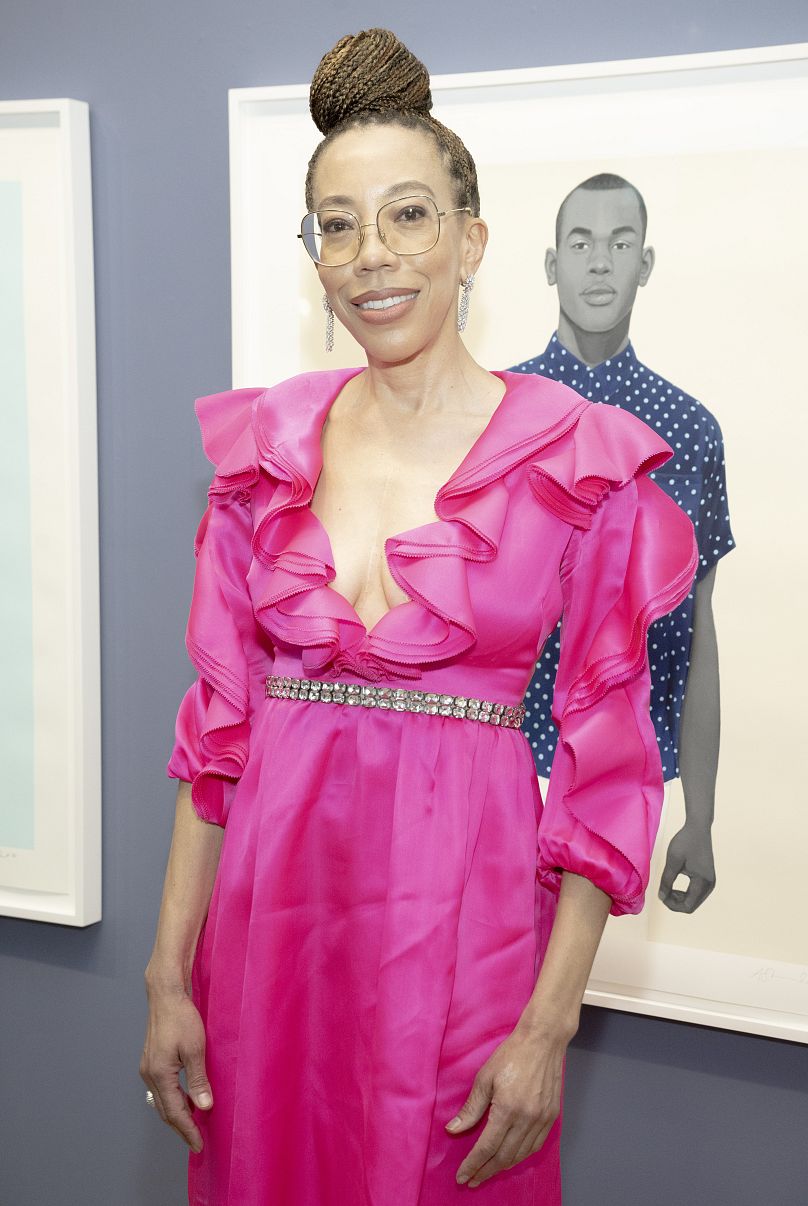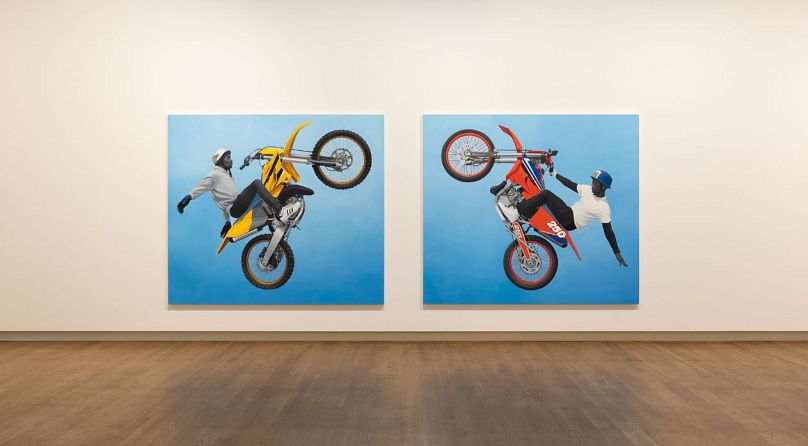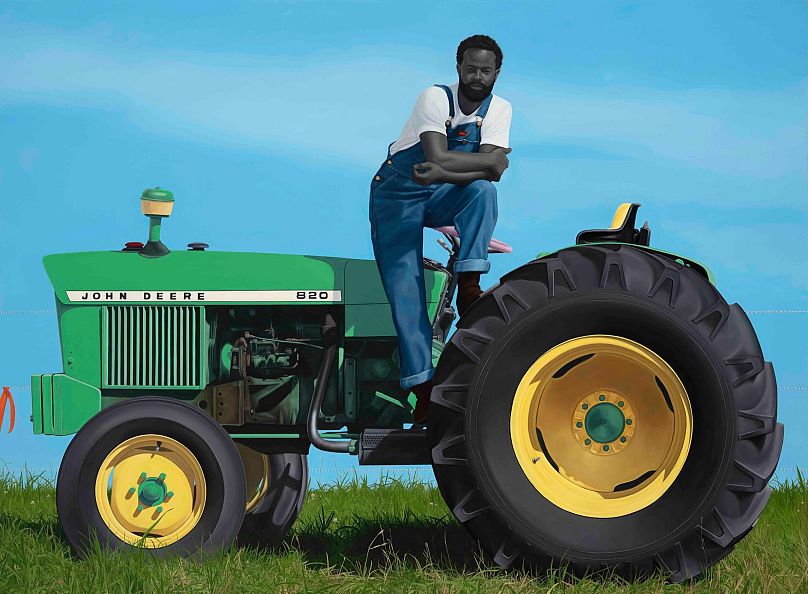Known for depicting the contemporary African American experience, Sherald travels to the Portuguese capital with fellow U.S. artists for a celebration of diversity in art
The United States First Lady was in Lisbon last week to mark three days of celebrations of art and artists currently on display at the official residence of the US ambassador to Portugal.
Jill Biden joined top diplomat Randi Charno Levine to launch the touring collection called ‘Celebrating Diversity: Democracy and Representation in Contemporary Art’.
The show aims to give visibility to several leading Portuguese artists including Leonor Antunes, Vasco Araújo and Angela Ferreira and a number of their American counterparts, like Nick Cave, Deborah Kass and Maya Lin.
One star turn from the US group is painter Amy Sherald, whose powerful work fits perfectly into the American embassy’s initiative and the ongoing debate surrounding the role of art in diversity and democracies.
Soft power
Ahead of the event, Charno Levine commented, “The arts play an important role in diplomacy, highlighting our shared values and challenges and creating a safe space for discussion and debate around some of the most pressing social issues of our times".
Perhaps most renowned for her 2018 portrait of Michelle Obama, Amy Sherald works mostly as a portraitist depicting African Americans living everyday life, with an emphasis on accurately representing Black life.
Speaking about her career, Sherald explains, “My mission as an artist has always been to put complex stories about Black lives at the forefront of people’s minds and reclaim time”.
At a showcase exhibition at Hauser & Wirth in Monaco earlier this year, Sherald’s work displayed its ability to humanise the Black experience by depicting her subjects in both historically recognisable and everyday settings.
In all of her work, Sherald purports the idea that Black life and identity are not solely tethered to grappling publicly with social issues and focuses too on the idea that resistance also lies in an expressive vision of self-sovereignty in the world.
Sherald says that by subverting existing narratives, she hopes to offer the viewer a reflection of themselves and the complexities of their interior lives, void of the constructs of race, gender, religion, and preconceived notions. Referring to her Monaco exhibition, she said, “sharing these paintings in Europe is an opportunity for me to reflect on how the tradition of portraiture finds continuity as one of several lineages alive in my work”.
Sherald is celebrated as one of the defining contemporary portraitists in the United States and is frequently acclaimed for her paintings of Black Americans which have become landmarks in the grand tradition of social portraiture.
That’s a tradition which has long excluded the Black men, women, families and artists whose lives have been inextricable from public and politicised narratives.
In her Monaco exhibition and her visit to Lisbon, Sherald continues her mission to reinsert Black figures into the art historical canon in a radical act of representation.
“I want to take up space and take up time. I want to produce something that can live in the world like I did and live universally in the world like I did”, she says, adding, “They should speak to the life of the person”.
Sherald has been inspired by an idea articulated by artist Alice Neel: ‘art is two things - a search for a road and a search for freedom’.
That sentiment is particularly clear in Sherald’s large-scale diptych ‘Deliverance’ from 2022. The work is over 3 metres tall and also draws inspiration from the bike culture that is local to Baltimore in Maryland, where the artist spent much of her career.
The striking painting shows two bikers in mid-air, as if suspended in time, in a space free from oppression and reflects on the sense of freedom that is part of riding.
The work’s composition is also reminiscent of traditional equestrian portraiture, alluding to a reappropriation of this historically Western style of painting.
Similarly, another piece entitled ‘A God Blessed Land (Empire of Dirt)’, also from 2022, depicts a man proudly atop his tractor, referencing traditional farm paintings from the 19th Century which typically reinforced notions of American identity.
Here, Sherald reflects on the history of agriculture in art as well as ideas around land ownership and systematic land dispossession.
Her bold and powerful paintings serve as a reminder of the importance of representation and the ongoing fight for freedom in marginalised communities - and her role in the Portuguese-American cultural exchange will likely shed light on Sherald’s noble endeavour.

